Katalognummer: CA0919-359 A KARTIKA FLAYING KNIFE, TIBET 17TH CENTURY The crescent-shaped iron blade inlaid in gold with wisps of fire, the gilt copper-bronze handle cast as a massive, four-pointed half-vajra, with décor of lotus petals and leaves in high relief. Modern slate stand. (2) Provenance: Spink & Son, London (by repute). Remainder of old Christies label to backside of stand. Condition: Extensive wear and traces of use, minor dents. Some corrosion to blade. Overall fine condition. Good natural patina. Weight: 620 grams Dimensions: Height 24 cm Curved Knife, or Hooked Knife (Sanskrit: kartari. Tibetan: Tri Gug), with a crescent blade commonly depicted in the hands of wrathful and semi-wrathful deities in Tantric Buddhism (immediately recognizable, because it has a half-vajra handle, as opposed to a full-vajra handle). The most common deities to hold the curved knife are the Mahakala Class of Wisdom Protectors. Typically, in their first pair of hands they hold a curved knife in the right and a skull cup in the left. Semi-wrathful goddesses and Dakinis such as Vajra Nairatmya and almost the entire Vajrayogini Class of Deities hold a curved knife and skull cup. In the past, Western scholars not understanding the function of this knife referred to it as a ‘chopper’. It more accurately should be called a flaying knife or hooked knife. In Tibetan literature the curved blade is described for use in skinning demon, human and animal skins/hides and then the hook is used for picking up chunks of cut flesh. The term ‘chopper’ first used by early Western scholars of Anthropology is quite inaccurate in the present study of Himalayan Style Art and Himalayan and Tibetan Religious Studies as no actual chopping is described in the literature or depicted in the art. 西藏十七世紀金剛鉞刀 新月形鉄刀錯金,火焰紋,鎏金銅手柄鑄成半金剛,并在其上高浮雕蓮花紋。現代底座。 來源:據説為倫敦Spink & Son收藏,底座背部有佳士得老標簽。 品相:廣汎磨損以及使用痕跡,輕微凹痕。 頂部有點被腐蝕,整體情況良好。天然包漿。 重量:620 克 尺寸:高24 厘米 Schätzpreis 估價: € 800 Startpreis 起拍價: € 400 -
Katalognummer: CA0919-359 A KARTIKA FLAYING KNIFE, TIBET 17TH CENTURY The crescent-shaped iron blade inlaid in gold with wisps of fire, the gilt copper-bronze handle cast as a massive, four-pointed half-vajra, with décor of lotus petals and leaves in high relief. Modern slate stand. (2) Provenance: Spink & Son, London (by repute). Remainder of old Christies label to backside of stand. Condition: Extensive wear and traces of use, minor dents. Some corrosion to blade. Overall fine condition. Good natural patina. Weight: 620 grams Dimensions: Height 24 cm Curved Knife, or Hooked Knife (Sanskrit: kartari. Tibetan: Tri Gug), with a crescent blade commonly depicted in the hands of wrathful and semi-wrathful deities in Tantric Buddhism (immediately recognizable, because it has a half-vajra handle, as opposed to a full-vajra handle). The most common deities to hold the curved knife are the Mahakala Class of Wisdom Protectors. Typically, in their first pair of hands they hold a curved knife in the right and a skull cup in the left. Semi-wrathful goddesses and Dakinis such as Vajra Nairatmya and almost the entire Vajrayogini Class of Deities hold a curved knife and skull cup. In the past, Western scholars not understanding the function of this knife referred to it as a ‘chopper’. It more accurately should be called a flaying knife or hooked knife. In Tibetan literature the curved blade is described for use in skinning demon, human and animal skins/hides and then the hook is used for picking up chunks of cut flesh. The term ‘chopper’ first used by early Western scholars of Anthropology is quite inaccurate in the present study of Himalayan Style Art and Himalayan and Tibetan Religious Studies as no actual chopping is described in the literature or depicted in the art. 西藏十七世紀金剛鉞刀 新月形鉄刀錯金,火焰紋,鎏金銅手柄鑄成半金剛,并在其上高浮雕蓮花紋。現代底座。 來源:據説為倫敦Spink & Son收藏,底座背部有佳士得老標簽。 品相:廣汎磨損以及使用痕跡,輕微凹痕。 頂部有點被腐蝕,整體情況良好。天然包漿。 重量:620 克 尺寸:高24 厘米 Schätzpreis 估價: € 800 Startpreis 起拍價: € 400 -



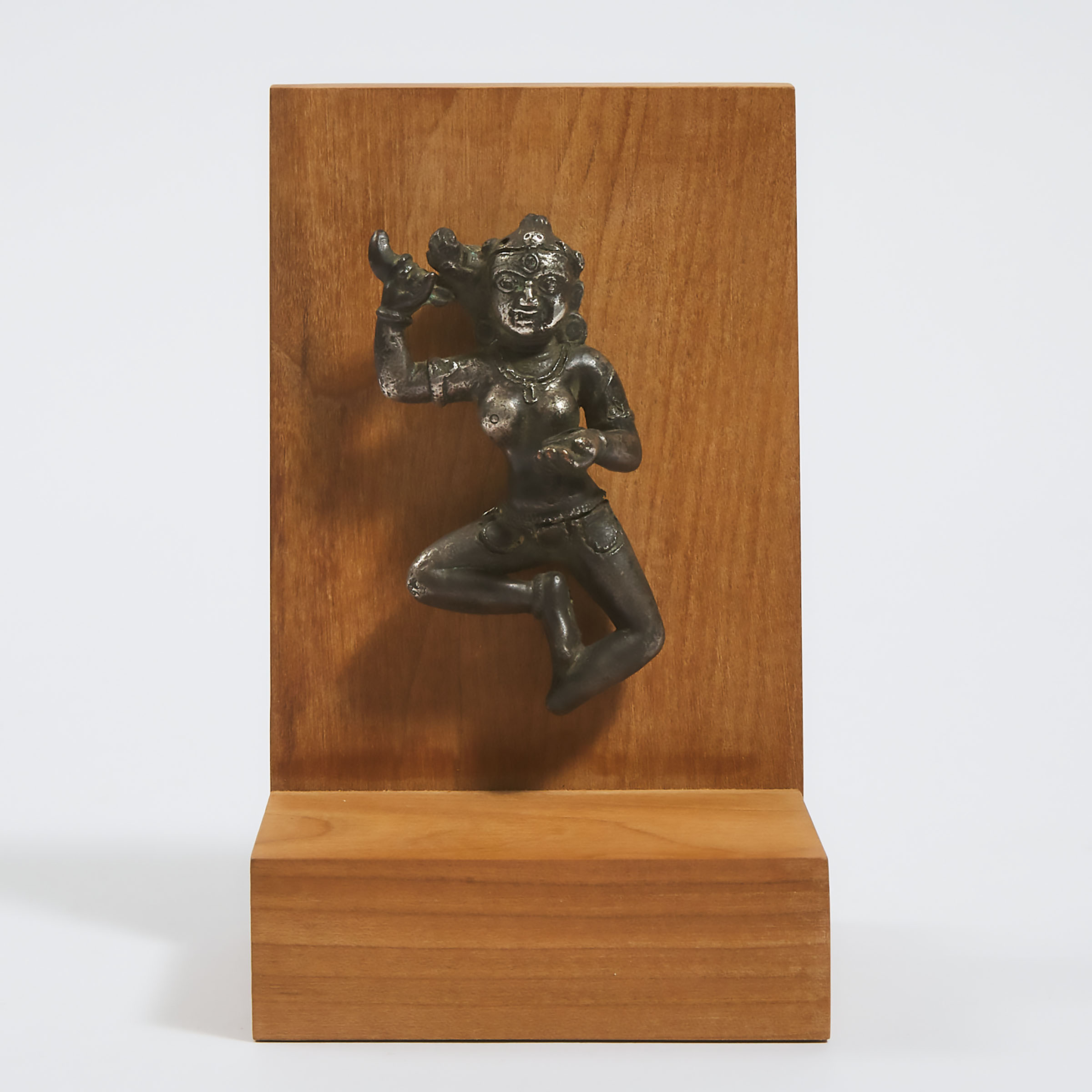

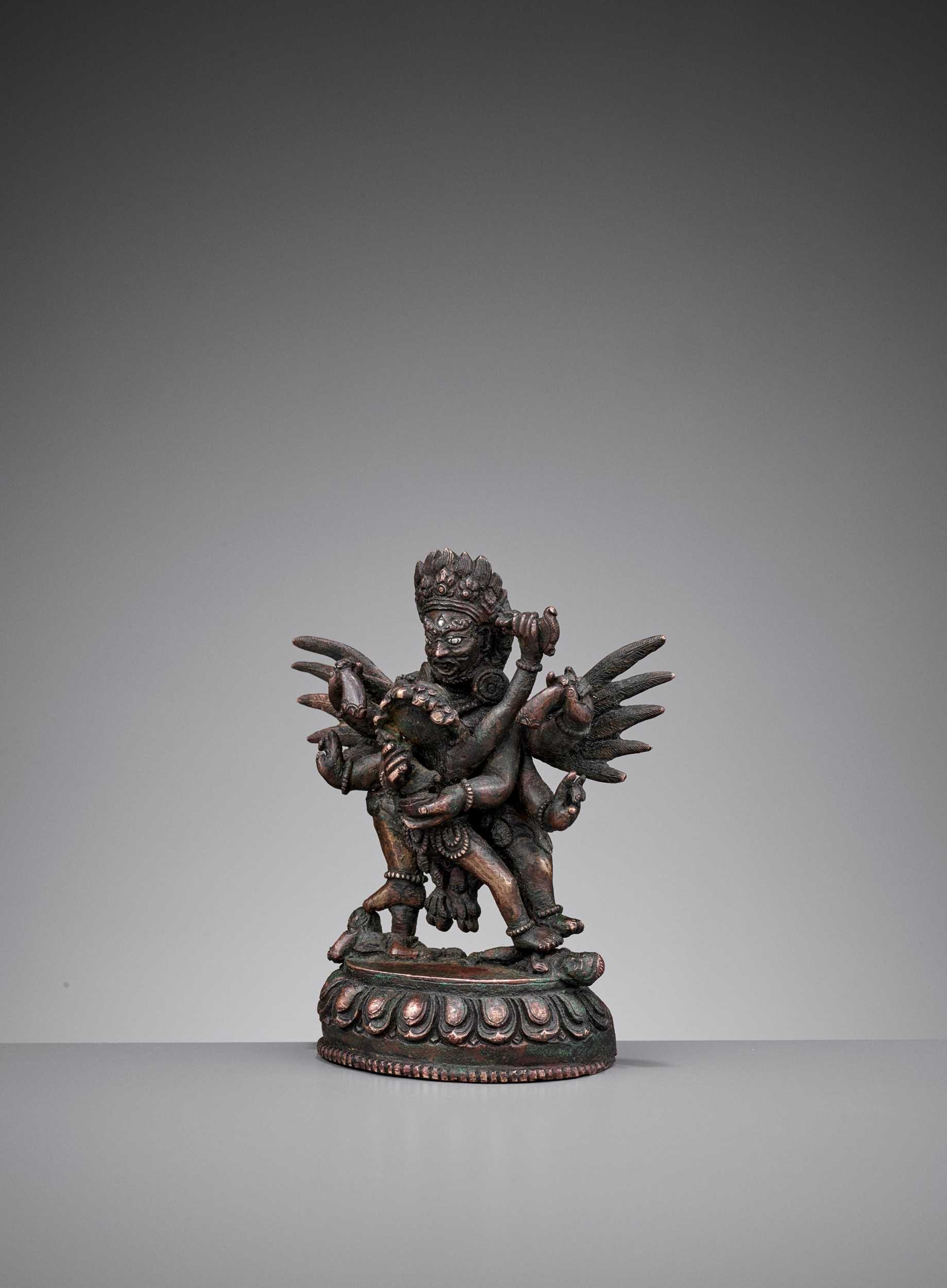
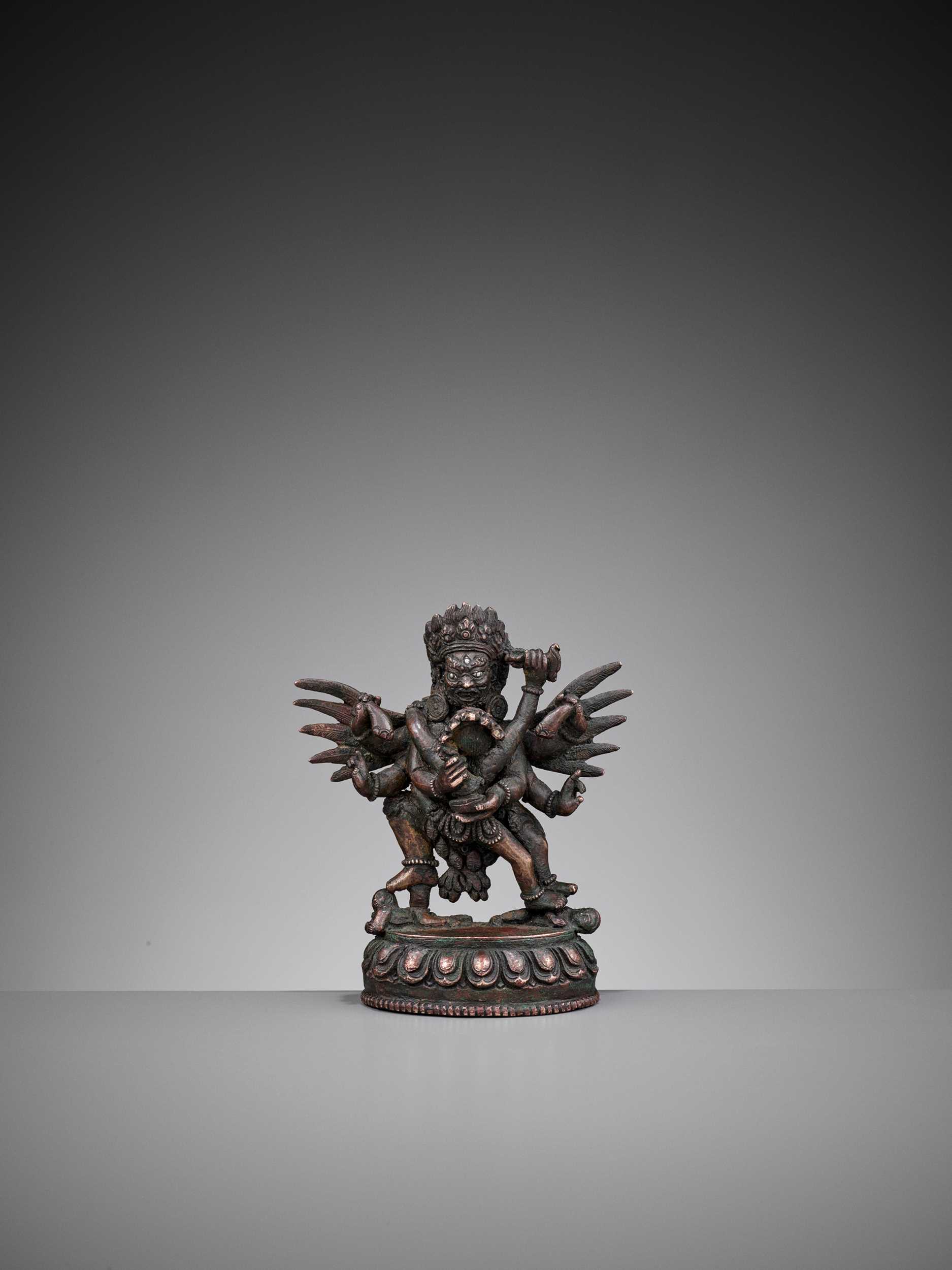
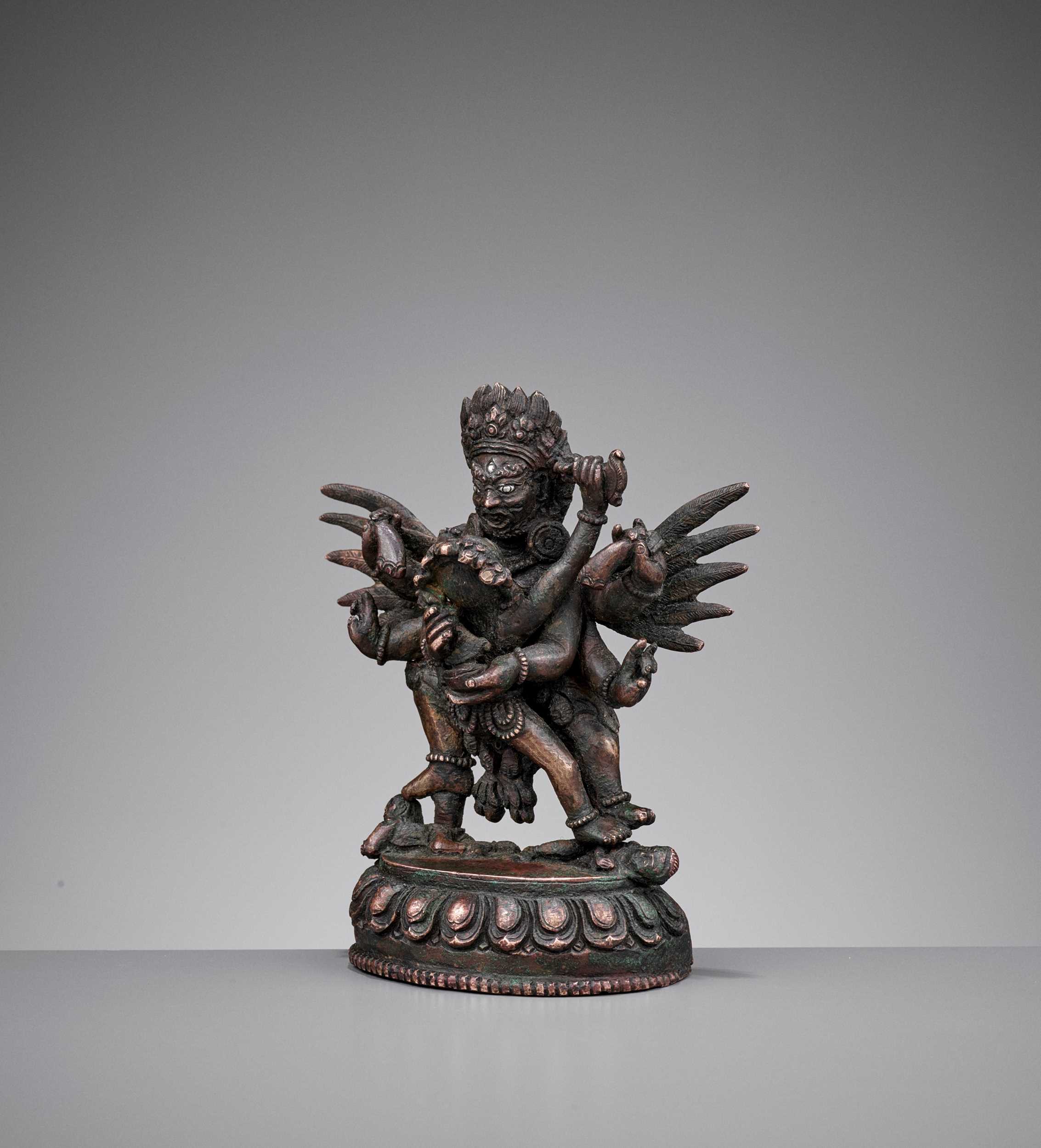



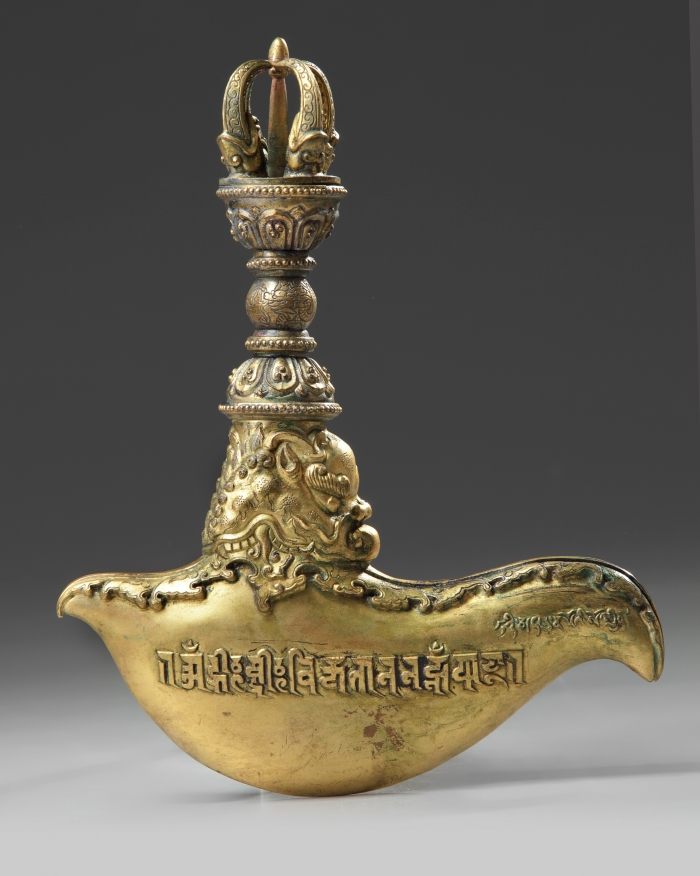
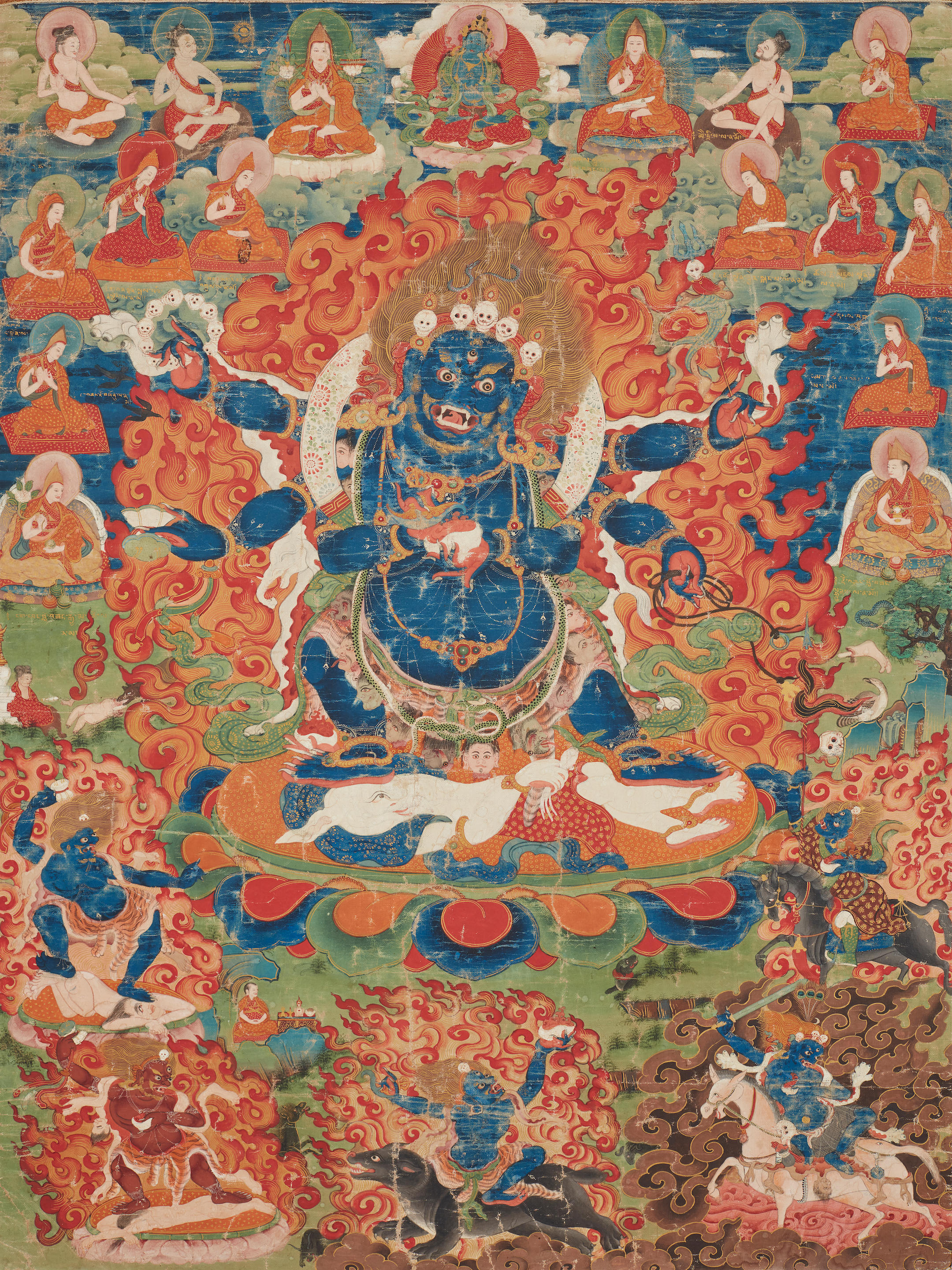

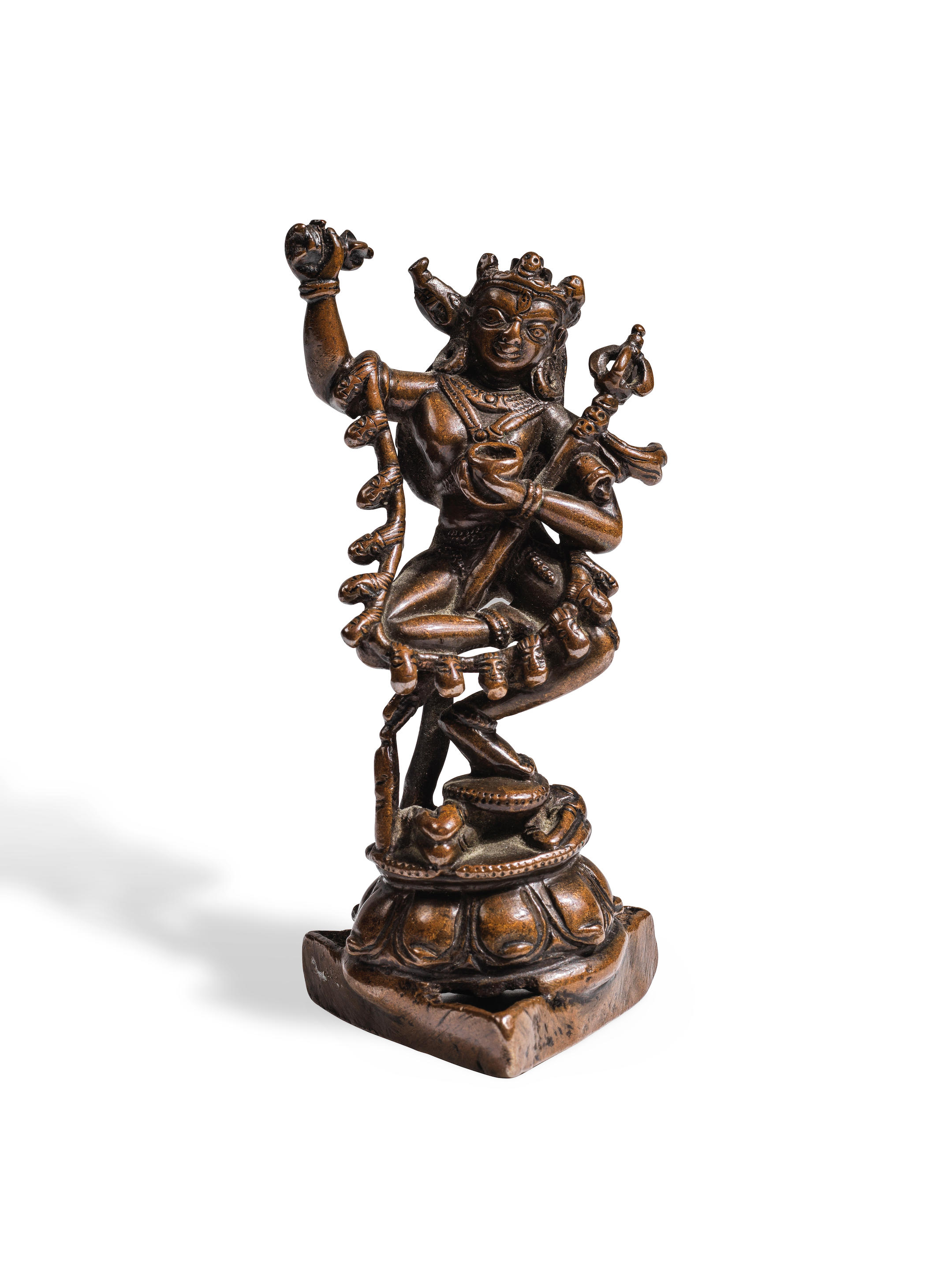
Testen Sie LotSearch und seine Premium-Features 7 Tage - ohne Kosten!
Lassen Sie sich automatisch über neue Objekte in kommenden Auktionen benachrichtigen.
Suchauftrag anlegen